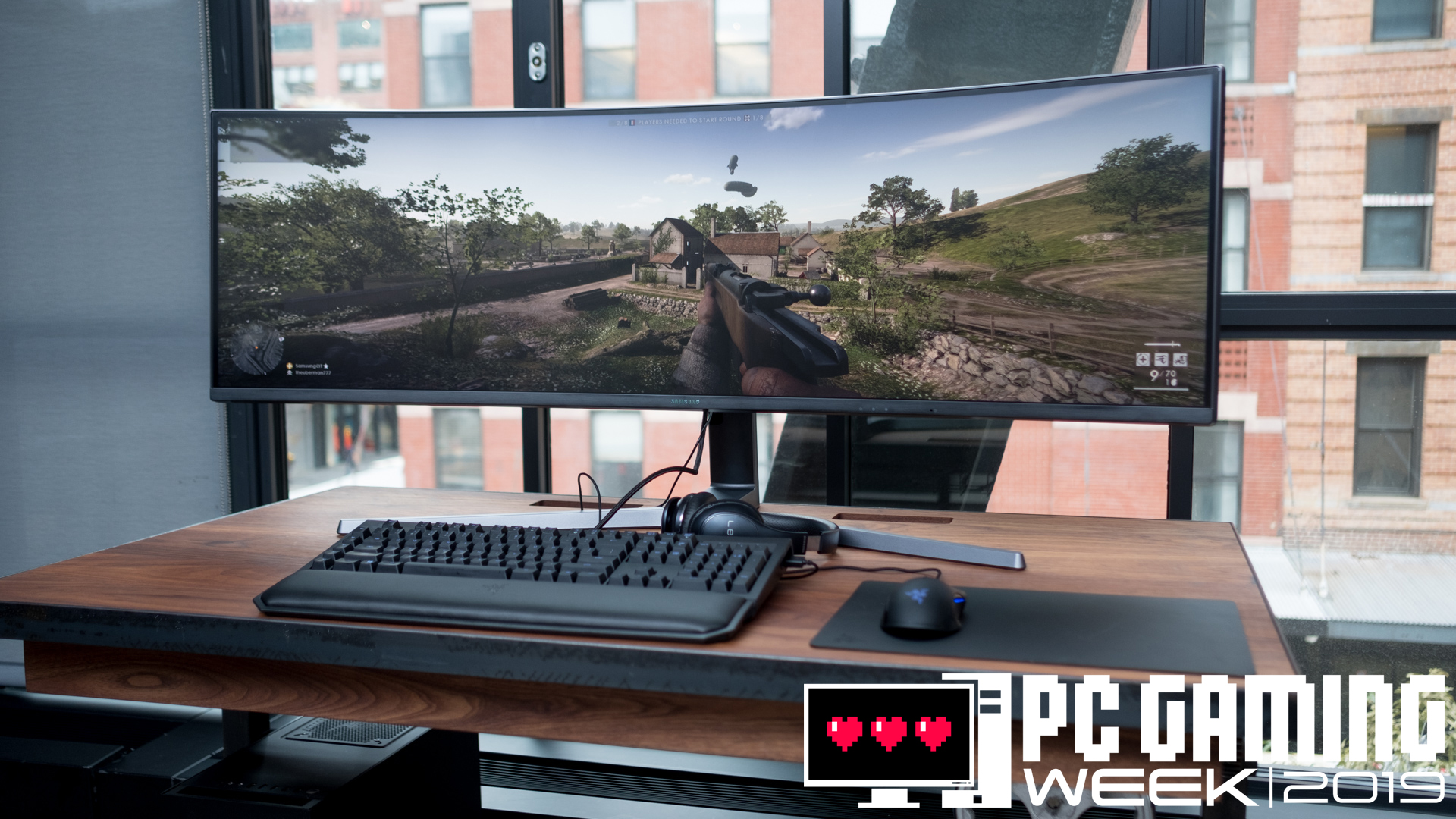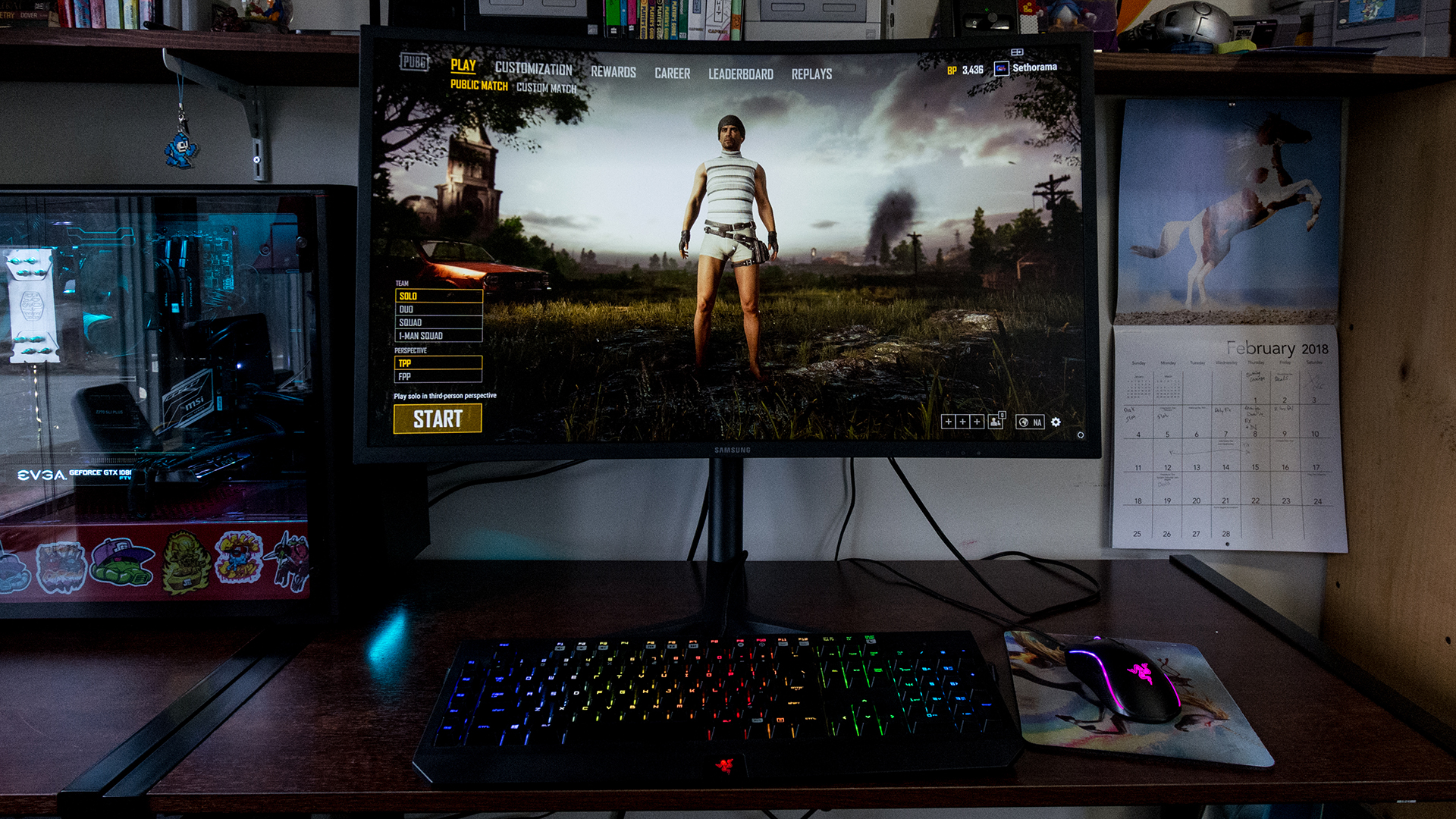
High-dynamic range (HDR) gaming on PCs and HDR in general has never been more prevalent than today. However, there’s a clear dichotomy of pricing that’s creating a rift in the gaming monitor world.
On one side, there were FreeSync 2 HDR gaming monitors priced well below a grand at launch. Meanwhile, Nvidia went for the jugular by introducing its two first G-Sync HDR gaming monitors at an astronomical price.
Likewise, Nvidia and AMD have opposing philosophies regarding how they are developing ecosystem of displays HDR gaming. Luckily, we had a chance to speak with both AMD’s Antal Tungler, Senior Manager of Global Technology Marketing, and Nvidia’s Vijay Sharma, Product Management Leader for Nvidia G-Sync, to get both companies’ takes on where the next generation display technology is going.
Tungler doesn’t mince his words and calls out Nvidia on the sizable two-grand price tags of the Asus ROG Swift PG27UQ and Acer Predator X27.


“The Samsung CHG70 does 1440p, 144 Hz, HDR, FreeSync 2, basically all the same things,” Tungler says. “Granted, not in an IPS panel, it's a VA panel, but the difference is not that big, and you pay four times as much on the Nvidia side than you pay on the FreeSync side."
“I think there's some tone-deafness on the side of Nvidia, in terms of when it comes giving people a really great HDR and variable-refresh gaming experience,” he tells us.
Sharma from Nvidia, on the other hand, argues that cutting-edge technology is always expensive to start, but he strongly believes that the price will go down quickly given the recent history of ultra-wide monitors.
Get daily insight, inspiration and deals in your inbox
Sign up for breaking news, reviews, opinion, top tech deals, and more.
“That's the case with a lot of new, leading edge technology, and the good news is, with technology, the prices come down really fast,” Sharma says.
“Over a year ago, the curved 34-inch G-Sync monitors were launched by a number of Alienware, AOC, ASUS, Acer, HP. The starting price point when they launched was about $1,299. And at that time, over a year ago, it was unheard of," Sharma tells us. "'Are you crazy? $1,299 for a PC monitor?'"
“And, then, within six months, it was common to see those curved monitors at $999 –so they saw a $300 drop in less than a year,” he says. “So, that’s what has happened historically with other monitors. Now we'll see what happens with the G-Sync HDR, but if what has happened in the past with technology holds true, the price is going to come down.”

HDR gaming for everyone
In our last discussion with Nvidia about G-Sync HDR monitors, Sharma and team clearly desired to deliver the best looking gaming monitor that ever existed. Sharma not only saw this as a goal to create the ultimate gaming monitor, but to also steer clear of the confusion that exists with the current slew of HDR gaming monitors that qualify for various levels of HDR certification and peak brightness.
“It's certainly confusing for me and I'm very close to this stuff,” Sharma says in response to the gamut of HDR gaming monitors available today. “It reminds me of when HD televisions first started appearing. I had always been an early adopter, and then when HD television started appearing, it was so confusing because some were 720i, 720p, 1080i, 1080p, this and that. And, I didn't buy one for years.”
“I don't want to make a mistake, because I'm going to live with this thing in my living room for a long time and I didn't buy one,” Sharma tells us. “So, I think when you have such a spread or variance in product experience, it confuses people, and that's not good.”
“Part of our philosophy and guiding principle is G-Sync, that sticker, that logo, our brand promise should cut through the confusion,” Sharma says. “So, if you buy a G-Sync HDR, you're getting the best available technology put together in the best possible way. You're going to have a good experience and you don't have to feel cautious about buying G-Sync HDR.”

Similarly, with FreeSync 2, Tungler and AMD also believe in only picking out the panels with the best image quality, but they also want to make HDR gaming more accessible.
“FreeSync 2 is on the path of, ‘let's make sure that is has the best quality panels’, it's also on the path of, "let's make it affordable and let's make it accessible to all gamers,’” Tungler says. “That's really the mission of FreeSync 2, is to combine variable refresh, so smooth gaming, with the best quality pixels that HDR content can offer.”
Like Nvidia G-Sync HDR, FreeSync 2 qualified panels must meet certain brightness, contrast ratio, color gamut, and latency requirements.
“We know it's not that easy to hit, that combined with variable refresh. But that's where we want to ensure that people have the best experience,” Tungler tells us. “Now, with that in mind, we also were cognizant that people don't want to spend thousands and thousands of dollars on monitor upgrades.”
“People are somewhat leery about upgrading their monitor” he says. "That's the last piece they consider upgrading, because they believe that is going to cost them a lot of money. They don't necessarily know what to look for when it comes to monitor tech. I think Nvidia's strategy of putting the best tech or gamer tech into the top of the top line only is not helping the cause. It's actually detrimental.”

A bright future for HDR gaming
Despite Tungler and Sharma’s differing – and sometimes opposing – stances on how HDR market should develop and grow, they’re both equally excited about its future.
Tungler himself believes it’s his and AMD’s task to drum up the importance of HDR in PC Gaming with developers and their users.
“Basically, no TV today that doesn't have HDR support and on the console side, they are well taken care of too. But on the PC side, the ecosystem is growing every day; we're seeing more and more HDR displays coming out to market, and I think that's just going to accelerate. Compared to some other gimmicky technologies in gaming, I think HDR is definitely here to stay and it's going to keep growing.”
Sharma echoes similar sentiments, noting how “HDR gives us a brand new roadmap, a new path to go down, so I think the refresh rates will increase. I think you'll see better color performance. I think the HDR performance is going to get better and better over time."
Welcome to TechRadar's PC Gaming Week 2019. We're celebrating the most powerful gaming platform on Earth with in-depth articles, exclusive interviews and essential buying guides that showcase everything PC gaming has to offer. Visit our PC Gaming Week 2019 page to see all our coverage in one place.
First published June 2018
Kevin Lee was a former computing reporter at TechRadar. Kevin is now the SEO Updates Editor at IGN based in New York. He handles all of the best of tech buying guides while also dipping his hand in the entertainment and games evergreen content. Kevin has over eight years of experience in the tech and games publications with previous bylines at Polygon, PC World, and more. Outside of work, Kevin is major movie buff of cult and bad films. He also regularly plays flight & space sim and racing games. IRL he's a fan of archery, axe throwing, and board games.
